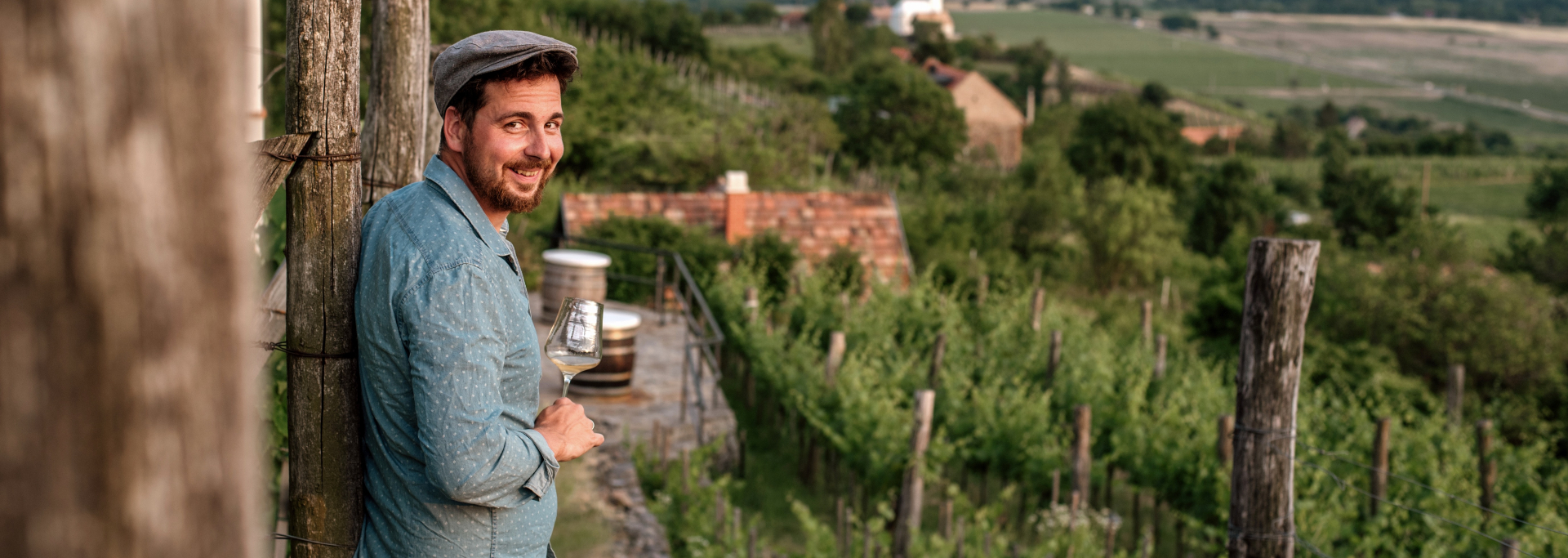

Tomcsányi, Somló, Hungary
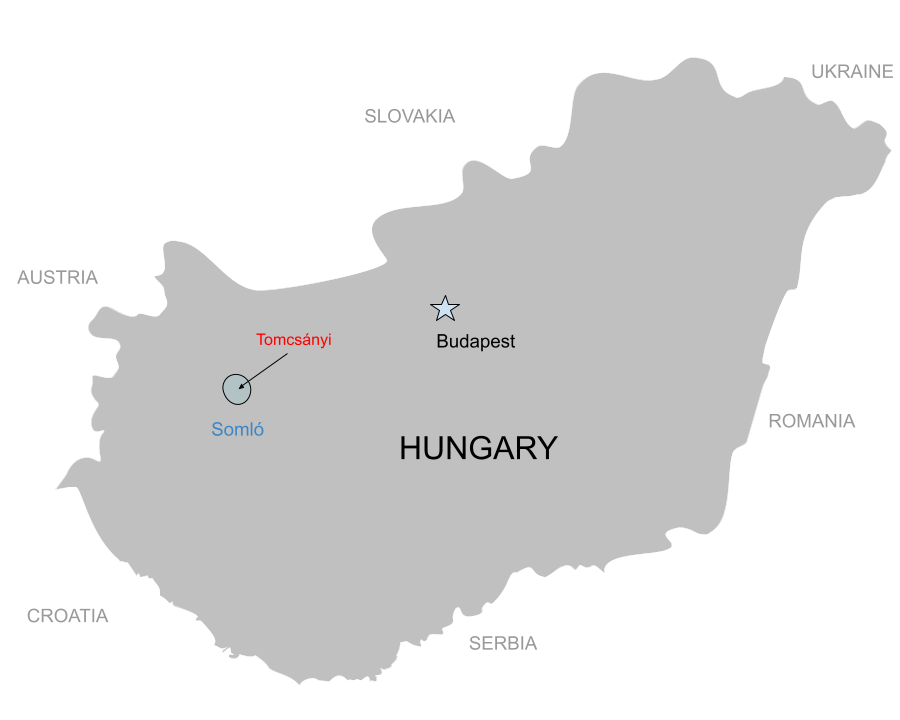
At a Glance
https://tomcsanyibirtok.hu
Somló
Cool Continental
Basalt and ancient seabed
220-260 meters
Slopes of an ancient dormant volcano
Hárslevelű, Juhfark, Olaszrizling, Furmint, Chardonnay
2.5 hectares
Demeter Certified
Natural
Somló
Cool Continental
Basalt and ancient seabed
220-260 meters
Slopes of an ancient dormant volcano
Hárslevelű, Juhfark, Olaszrizling, Furmint, Chardonnay
2.5 hectares
Demeter Certified
Natural
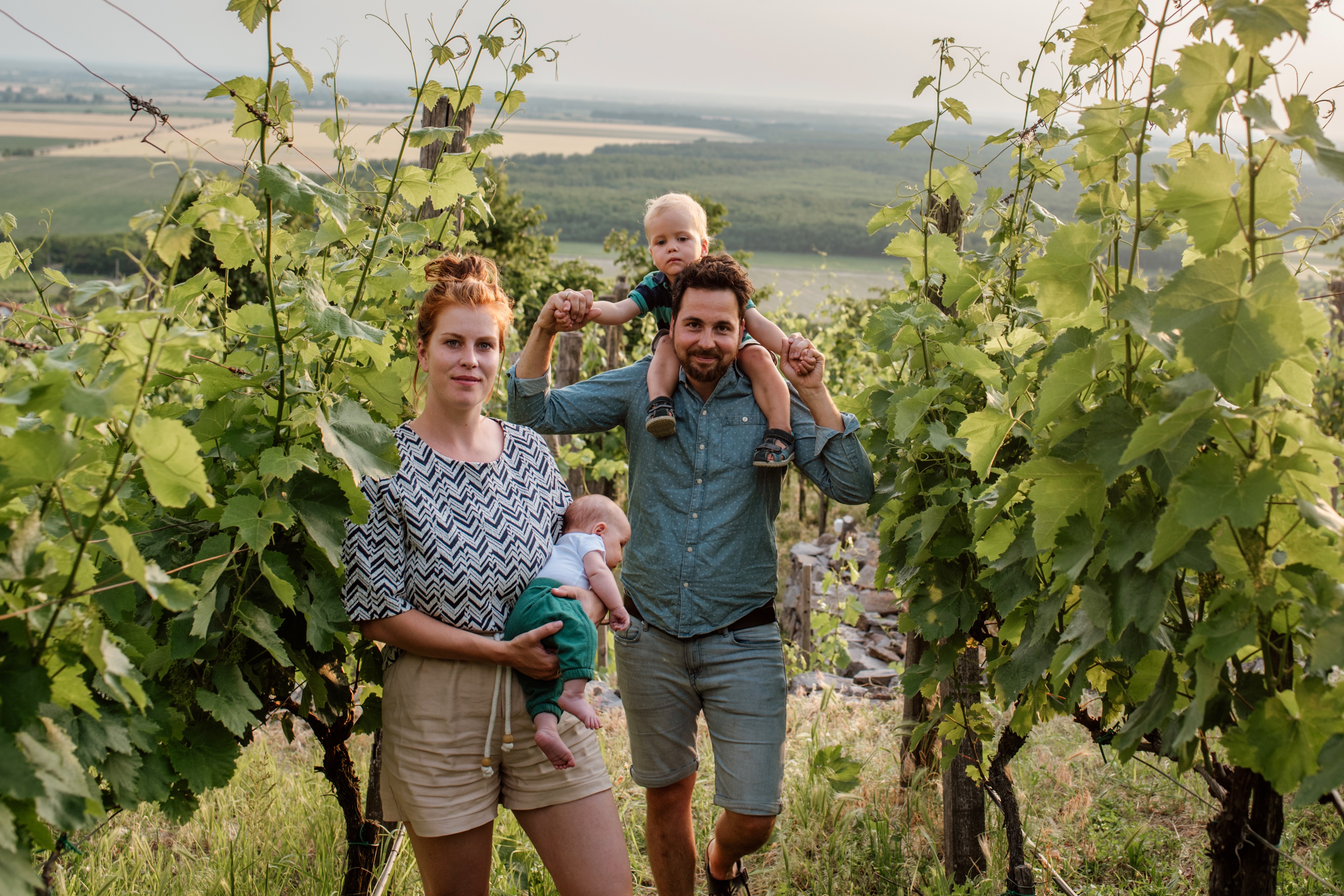
Árpád Tomcsányi and his family
The People
Given our limited and outsider’s perspective, there has always seemed to be two major schools of thought on the basalt-riddled hill of Somló. Some pick late and either use long élevage or residual sugar to find balance while others pick early and rely on more reductive winemaking. This is of course a gross oversimplification, but what Árpád Tomcsányi is doing is undeniably a third bowl of porridge. We’ve never tasted wines from Somló like this before. At the same time, he feels responsible for continuing the legacy of Somló and his labels communicate that right off the bat – a fingerprint where the friction ridges stand in for the topography of the appellation.
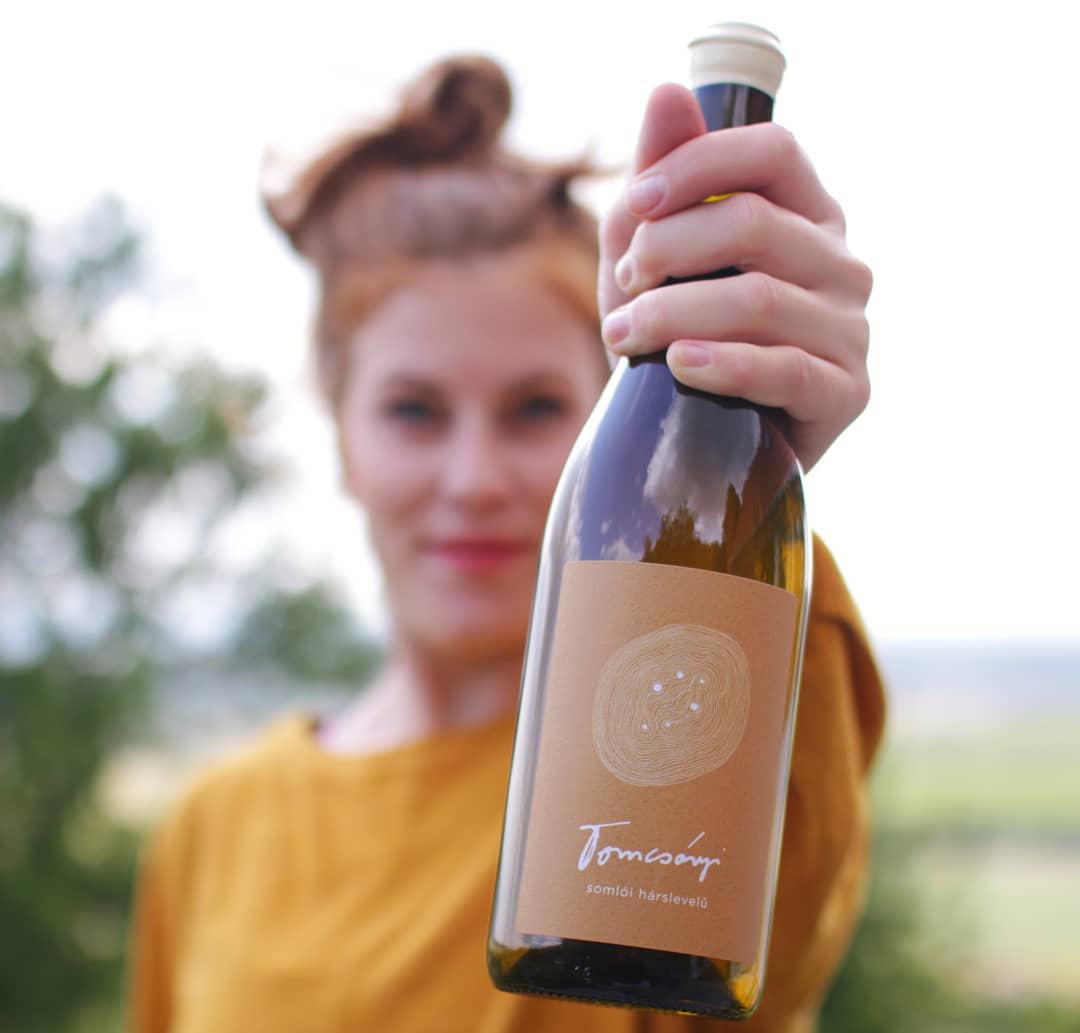
Nora Tomcsányi showing the Tomcsányi Hárslevelű
The family also checks off all the major boxes: Certified organic, Demeter in 2022. The wines are handled with the aim of being fresh, clear headed and alive. They are passionate and driven people. They are trying to create the best way of life for themselves and their children (3rd son coming in May). Wines taste good.
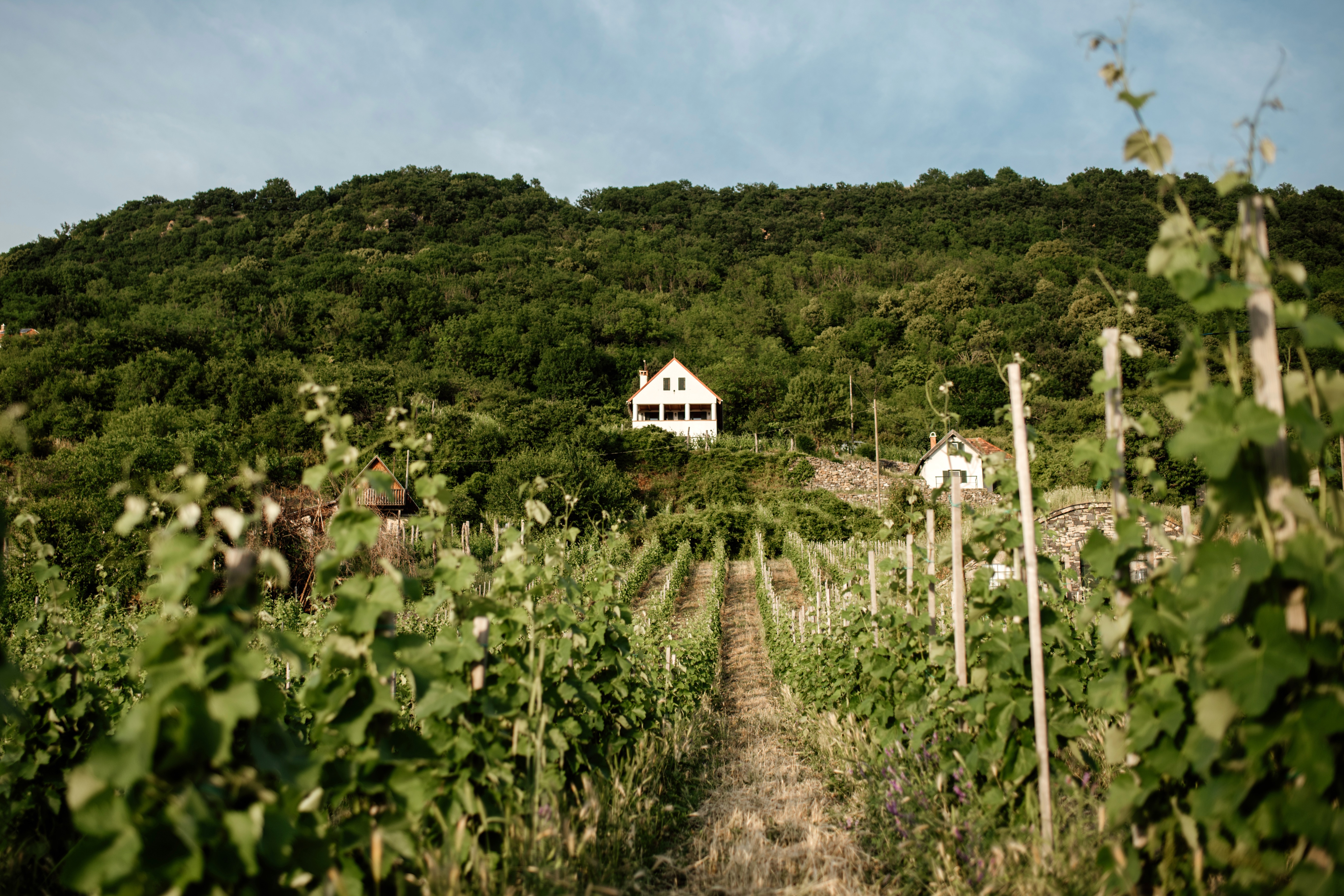
Looking up on Somló towards their home
While our existing partners on Somló are many years established, this is a fairly new project. The inaugural vintage was 2016 which also coincided with Árpi’s marriage to Nóra just days before harvest. Genuine bonds of love and commitment for family and place were formed simultaneously. He’s even written a love letter to this effect. In these early days, Árpi was still splitting his time between Budapest and Somló working in film. 4 days on Somló and 3 days in Budapest was the routine. This was at odds with wanting to slow down and find a consistent pace in life. It’s also the pace of life they want to have reflected in their farming and wines. Distilling down what’s most important. They’ve been renovating an old home and hope to move in permanently early next year.

Nora Tomcsányi showing the Tomcsányi Hárslevelű
The family also checks off all the major boxes: Certified organic, Demeter in 2022. The wines are handled with the aim of being fresh, clear headed and alive. They are passionate and driven people. They are trying to create the best way of life for themselves and their children (3rd son coming in May). Wines taste good.

Looking up on Somló towards their home
While our existing partners on Somló are many years established, this is a fairly new project. The inaugural vintage was 2016 which also coincided with Árpi’s marriage to Nóra just days before harvest. Genuine bonds of love and commitment for family and place were formed simultaneously. He’s even written a love letter to this effect. In these early days, Árpi was still splitting his time between Budapest and Somló working in film. 4 days on Somló and 3 days in Budapest was the routine. This was at odds with wanting to slow down and find a consistent pace in life. It’s also the pace of life they want to have reflected in their farming and wines. Distilling down what’s most important. They’ve been renovating an old home and hope to move in permanently early next year.
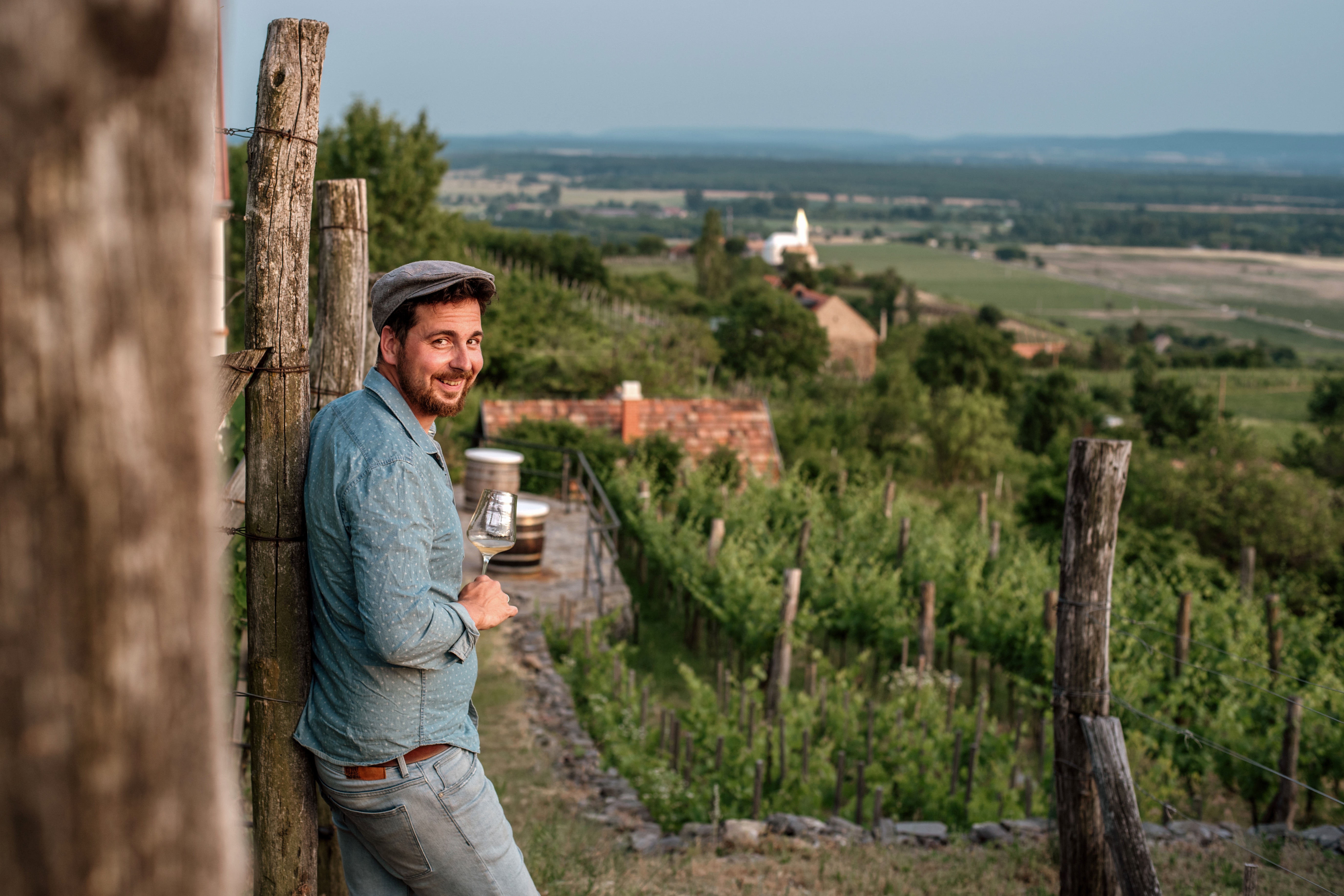
Árpád Tomcsányi in the vineyard
The Vineyards
His father initially purchased the property on the Western slope of Somló with this in mind over a decade ago. As Árpi put it, “Your vineyard needs to help you to live.” They currently have 3 hectares with 4 being the eventual goal. High up on the hill, the soils are mostly heavy basalt with patches of clay along with plenty of sun. Cover crops are planted and they manage everything else with copper, sulfur, teas and orange oil. Demeter certification is set for 2022 and he’s intent on adding bees, getting more goats and cultivating more diverse green spaces. As filmmakers by trade, they’ve even directed and produced a short film together devoted to Biodynamic farming.
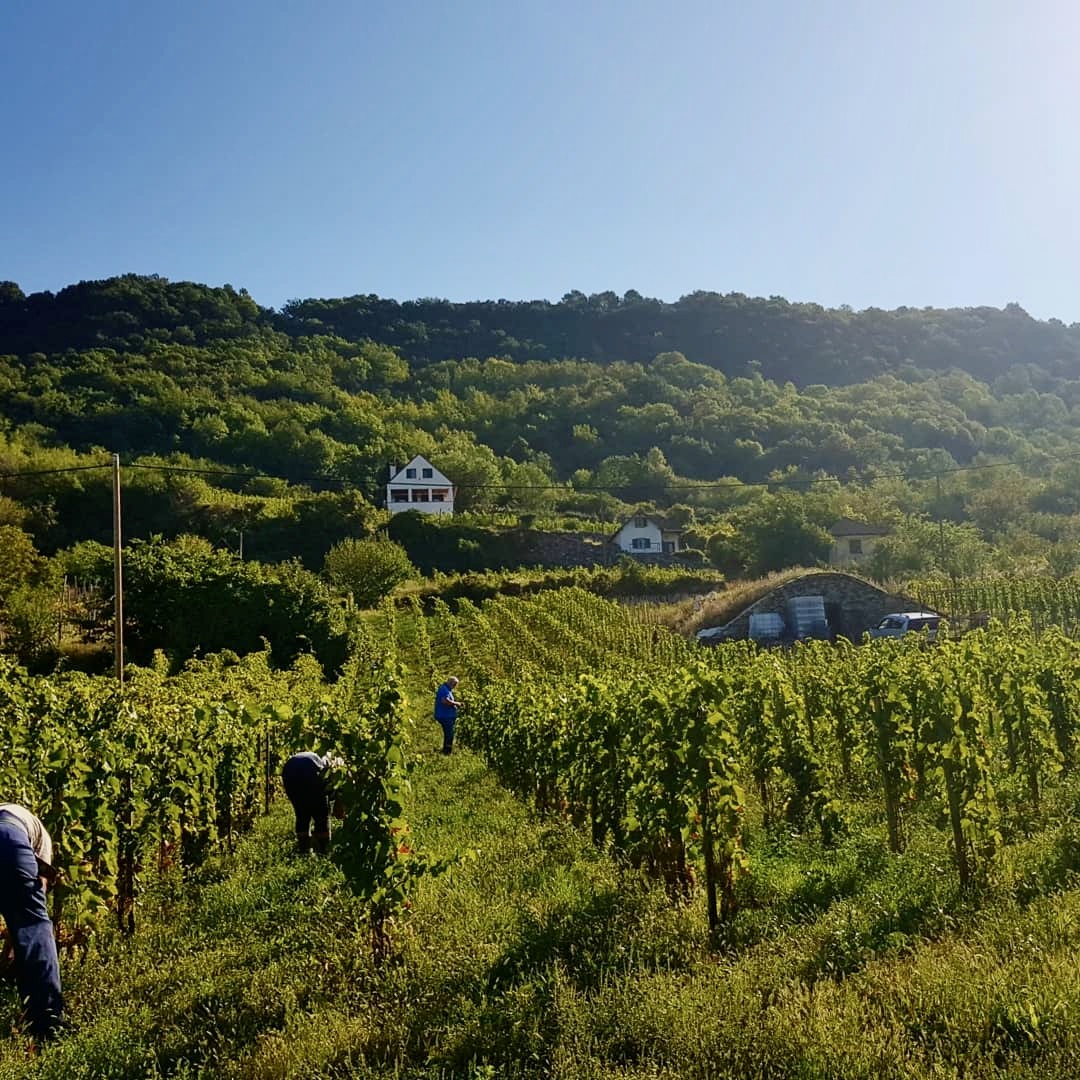
Harvest at Tomcsányi
Winemaning
As for winemaking, it’s been a mixed diet of education and experiences. On the intellectual front, he hosts a podcast called “Borivók” where he interviews mentors and icons about natural winemaking. He has also worked harvest down in Badacsony with Ambrus Bakó, in Szent György with István Bencze and Endre Szászi, and made his first vintage in the cellar of István Spiegelberg on Somló. He often gets picked up at the train station by other winemakers from the hill. There’s a growing community that he’s getting sutured into. On the more technical front, he tends to keep macerations on the lighter side, all spontaneous fermentations are in barrel or amphorae and he’s very keen on longer lees aging without stirring. He uses a 100+ year basket press, zero machines in the cellar, and prefers super light toasted Stockinger barrels. The general idea is to have the freedom to experiment and take risks, but only send what really works to the market. All of the wines are bottled unfiltered, and since the 2019 vintage, zero additions including sulfur.
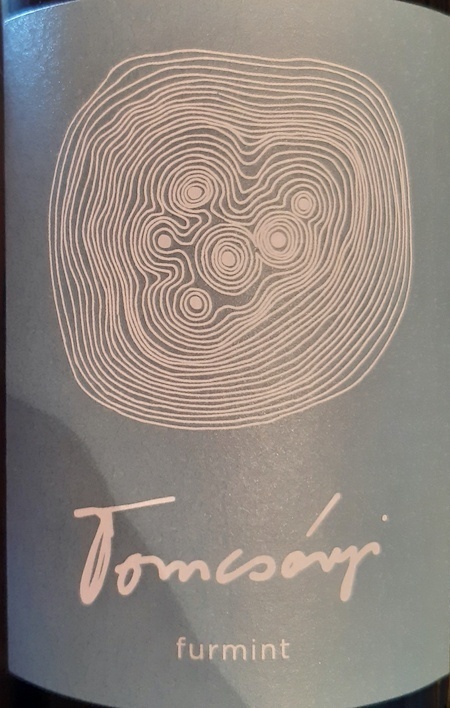
White Wine
Furmint;
13.6%
1.5 g/l
5.8 g/l
Furmint;
13.6%
1.5 g/l
5.8 g/l
These are from the vines directly next to the cellar door where the basalt is little more present. The youngest vines are ones that Árpi planted just over a decade ago, and the others are over 40 years old. As with many of the wines, it takes multiple harvest passes to capture the freshness and depth all the while avoiding heavy botrytis. Direct pressed to barrel, 15 months on the lees in barrel, no racking or stirring, and bottled with zero additions. While thankfully not rushed to bottle and prematurely released, this is a wine that really comes around with another 2-3 years in bottle.
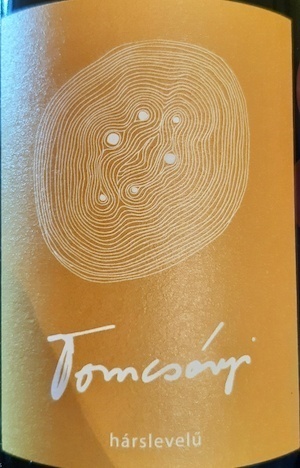
White Wine , Organic
Hárslevelű;
13.9%
1.4 g/l
6.2 g/l
Hárslevelű;
13.9%
1.4 g/l
6.2 g/l
Whereas the Furmint comes from more basalt riddled soils, the earlier ripening and more aromatic Hárslevelű comes from slightly older and more limestone, clay and tuff soils. These areas are more prone to downy mildew, but worth whatever they can get. There’s only 1 barrel of 2022 for example, so we are lucky to have a little more ’21 to enjoy. In any case, harvest came in multiple passes between a few different plots, 15% was skin macerated for a few weeks while the rest was direct pressed and fermented in larger format oak barrels. Blended, aged for 15 months, no racking or stirring, and bottled with no additions.
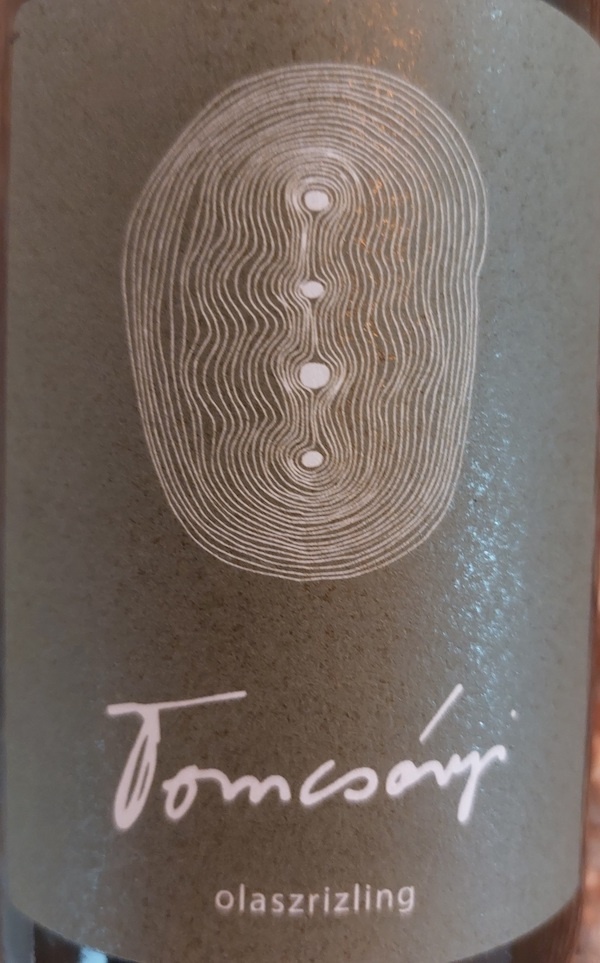
White Wine , Organic
Olaszrizling;
11.5%
Olaszrizling;
11.5%
Years ago during a lunch at the winery, Árpi pulled out a 2020 Olaszrizling that had been open for roughly a week in the fridge and was down to the last quarter of a bottle. We each had a little splash and it blew us away. This is the first time since then that the wine has been available for export. Half of the wine is 90% direct press Olaszrizling and 10% Rajnai Rizling from 2022. The other half, hence the non vintage, is seven month skin contact Olaszrizling from 2023. Blended and left to age as long as cash flow allowed. Like so many unsulfured wines, we often drink them far too early. This is one way to add much needed time. It’s a wonderful marriage of freshness with some longer élevage structure and finesse. Only 300 bottles came to the States, but a really special and new lens in which to view this tiny basalt hill.
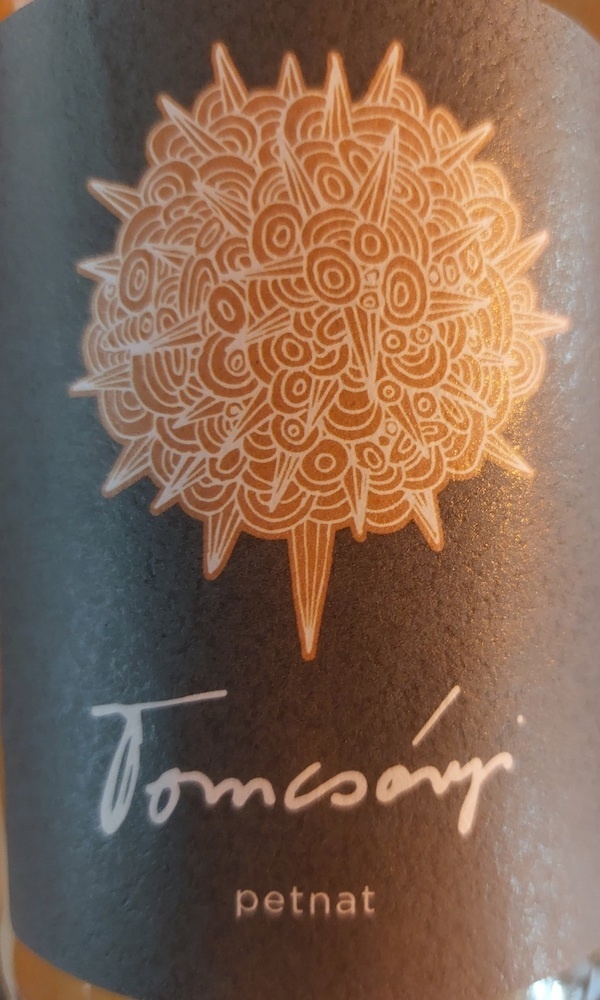
Sparkling Wine
Olaszrizling; Chardonnay; Traminer;
12.3%
Olaszrizling; Chardonnay; Traminer;
12.3%
This is actually our first Pét-nat from Somló from any producer. Much of that is because botrytis is so prevalent and sought after in certain schools of thought. At lower elevations, botrytis is also more common due to the humidity layer and exposure. Along comes Tomcsányi which is nearly at the very top of the volcano. Along with higher immunity from organic farming, his grapes can be both ripe, botrytis free and screaming with acidity. This 2023 is a blend of direct pressed Olaszrizling, Chardonnay, and Traminer followed by 1 month in barrel. Bottled with just 12 g/l RS, the lower pressure bar avoids the explosive and foaming nature of pet-náts we try to avoid in lieu of something persistent, aromatic, dry and delicious.
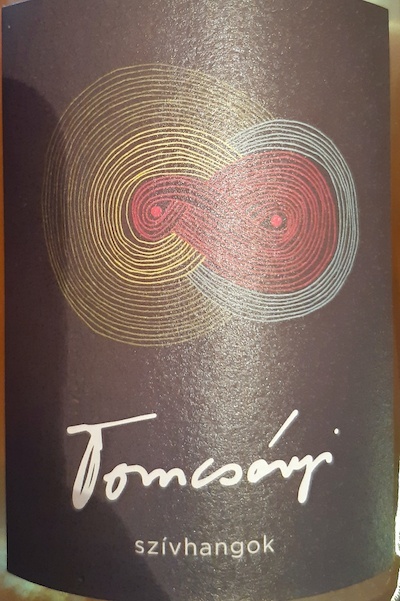
White Wine , Organic
Hárslevelű; Juhfark; Olaszrizling;
11.8%
1.3 g/l
5.1 g/l
Hárslevelű; Juhfark; Olaszrizling;
11.8%
1.3 g/l
5.1 g/l
The 2018 Szívhangok is a cuvée of Hárslevelű, Juhfark, and Olaszrizling. The name of the wine translates to “heart sounds” in honor of Árpi’s father who is a cardiologist. The Hárslevelű spent 4 days on the skins, the Juhfark for 1 day, and the Olaszrizling was all direct press. Fermented separately, lightly filtered and with a small addition of SO2. This is more in line with classic Somló, the beginning of his learning curve for where he sees himself going, and really elegant.
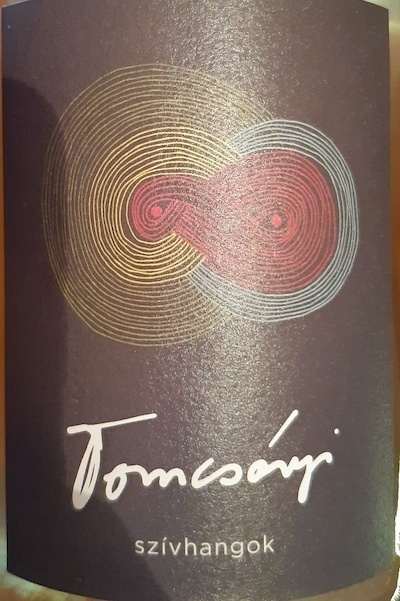
White Wine , Organic
Olaszrizling; Chardonnay; Traminer; Furmint; Hárslevelű;
13.5%
4 g/l
Olaszrizling; Chardonnay; Traminer; Furmint; Hárslevelű;
13.5%
4 g/l
The name of the wine translates to “heart murmur” in honor of Árpi’s father who is a cardiologist. The grapes and method might change year to year, but it’s a sounding board and fingerprint of the vintage. The 2021 happens to be a Somlói kitchen sink co-fermented field blend of Chardonnay, Tramini, Olaszrizling, Furmint, Hárslevelű, and Juhfark. It’s basically a Somlói Gemischter Satz fermented in 1000 liter oak barrels. To add even more liveliness to the 2021, he left around 4 g/l of residual sugar at bottling which has resulted in a light fizziness. Such a pleasure to drink and a completely new school of thought on the hill to be sure.

Red Wine , Organic
Merlot; Kékfrankos; Syrah;
11.5%
Merlot; Kékfrankos; Syrah;
11.5%
Árpi’s father prefers “bigger” red wines, so they ended up planting just enough Syrah for 200’ish bottles to keep him happy. All was well for a time. Then it started to grow on Árpi, but it lacked acidity and was missing a certain electricity. Much like the wild cherry trees that dot the vineyards around their house, there’s a bright tartness that needs to marry with the ripe fruit. He then decided to co-ferment the Syrah with Kékfrankos and Merlot. All of these red vines are planted near the cellar at high elevation near his parents house and range from 8-30 years old. There’s even some newly planted Kadarka up there but it’s not quite ready. Nevertheless, this is essentially a Somlói red Gemischter Satz that very much reads like a Siller. There aren’t many reds made on Somló, probably enough commercial examples to count on one hand. Last time we checked there were around 7-8 hectares of red fruit in the entire appellation and arguably none of them are like this. Bottled unfiltered with zero additions.
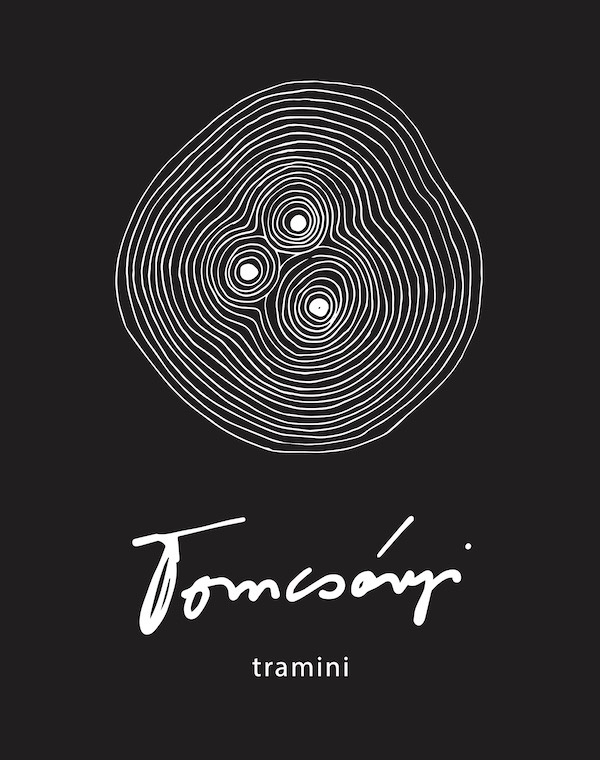
White Wine
Traminer;
11.9%
0.7 g/l
5.4 g/l
Traminer;
11.9%
0.7 g/l
5.4 g/l
Aromatic skin contact wines can easily go off the rails. This 40 year-old north west facing site just behind their home somehow avoids the common pitfalls of soapiness, bitterness, lack of acidity and simply being over macerated to the point where finishing a bottle becomes a chore. Macerated for 12 days followed by 10 months in 225L French oak, it was bottled without any additions. The Somlói character of depth and freshness shines through along with the salty vein that runs through every wine grown on this extinct volcano.